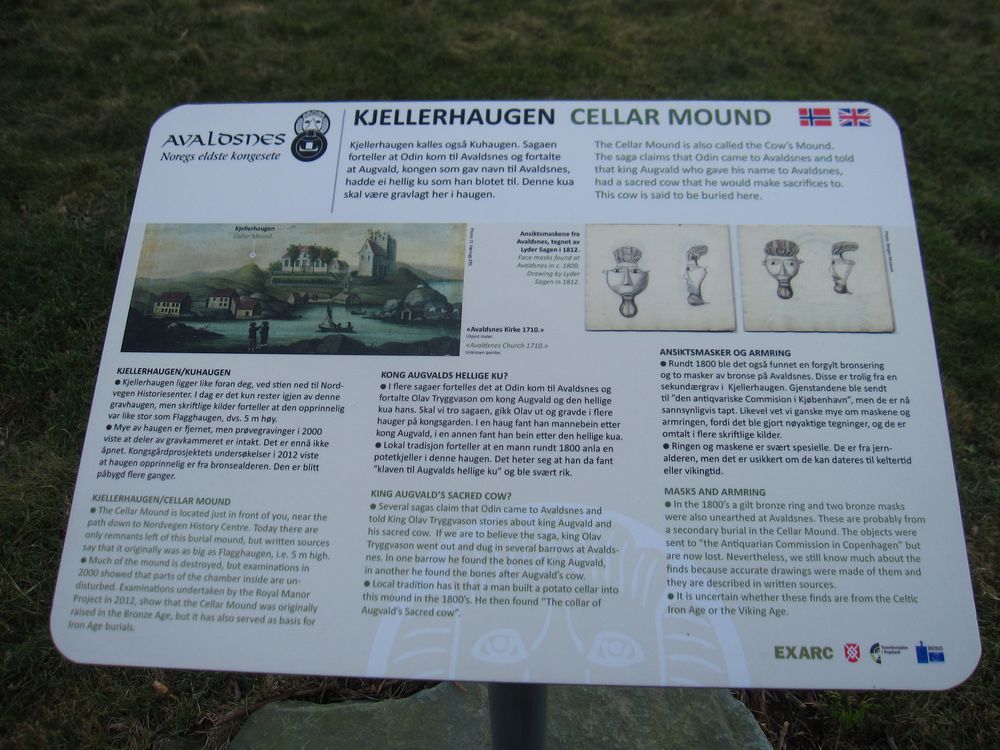The site of Norway’s oldest royal seat of kings is located at the small town of Avaldsnes outside Haugesund on the island of Karmøy. When we visited the Nordvegen historical centre it was closed, but we got to see the farm of Harald Fairhair, the king who united Norway.
The king’s actual estate was only discovered (archaeologically) in 2017, and is located right next to the church dedicated to St Olaf. Avaldsnes has been the home to Norway’s kings and a centre of power for around 3,500 years, due in part to the shipping route that goes by (the island of Karmøy protects the mainland from the wild North Sea). It’s for this reason that some suggest it became the first Hanseatic member in Norway, before Bergen took over.
There are some nice legends about the gods Thor and Odin, who were active in the area around Haugesund and Avaldsnes. This about Thor from the Grimnismal poem:
“Kormt and Ormt and two large rivers; these shall Thor wade every day when he walks to deem at the Yggdrasil Ash; Thus the bridge of heaven can burn; warm is holy water.”
Kormt is the ancient name for ‘shelter’ in old Norse, and is the origin of the names Karmøy and Karmsund. Thor would wade the waters of Karmsund everyday on his way to Yggdrasil, the holy Ash tree, where the gods would meet.
Odin also came to Karmøy to tell Olaf Tryggvason (later St Olaf) stories about the old ways, but I guess those tales fell on deaf ears, as Olaf was instrumental in converting Norway to the new religion.
Sources say that Avaldsnes was named after king Augvald, who was well known for his sacred cow. Legend says the cow provided him with good luck and fortune in his many endeavours. The mound found next to the king’s buildings at Avaldsnes is called the Cellar Mound. It’s here that some believe the holy cow and Augvald were buried. When Olaf found this out, he set about trying to locate and dig up their remains.
In mythology and old texts the mother goddess is often represented by the symbol of a cow, especially in her capacity as a provider of life and sustenance (often meaning knowledge and wisdom that makes the mind and spirit eternal).
Harald Fairhair was a well travelled guy and we’ve been to some of the other places where he was active, such as Randsfjorden, Dovrefjell, Møllebukta i Stavanger, and Utstein Kloster, north of Stavanger.

